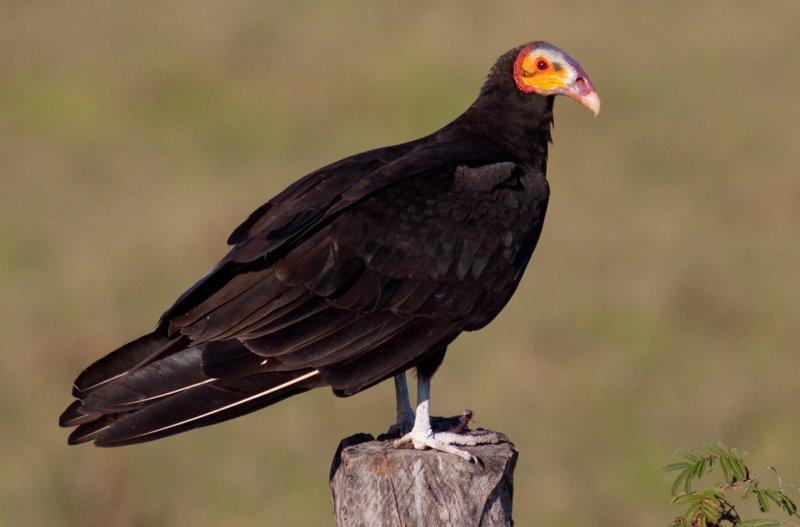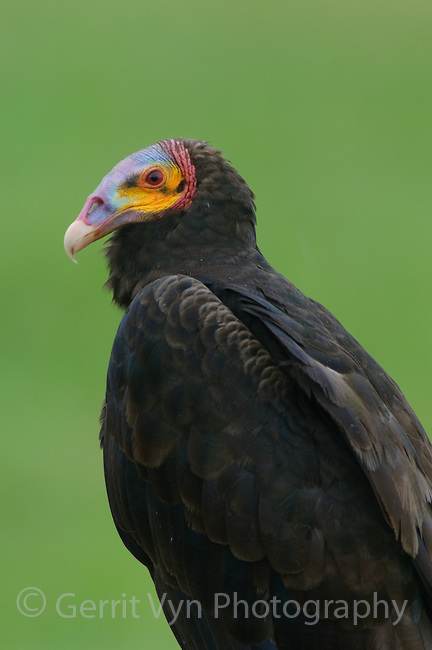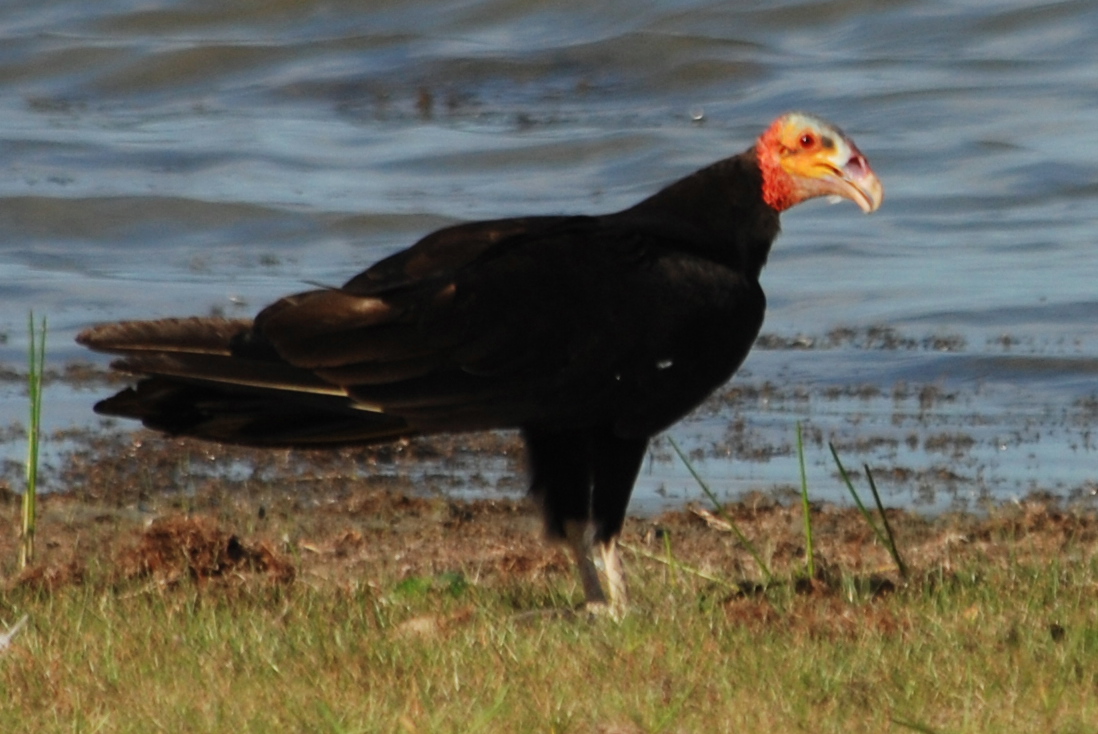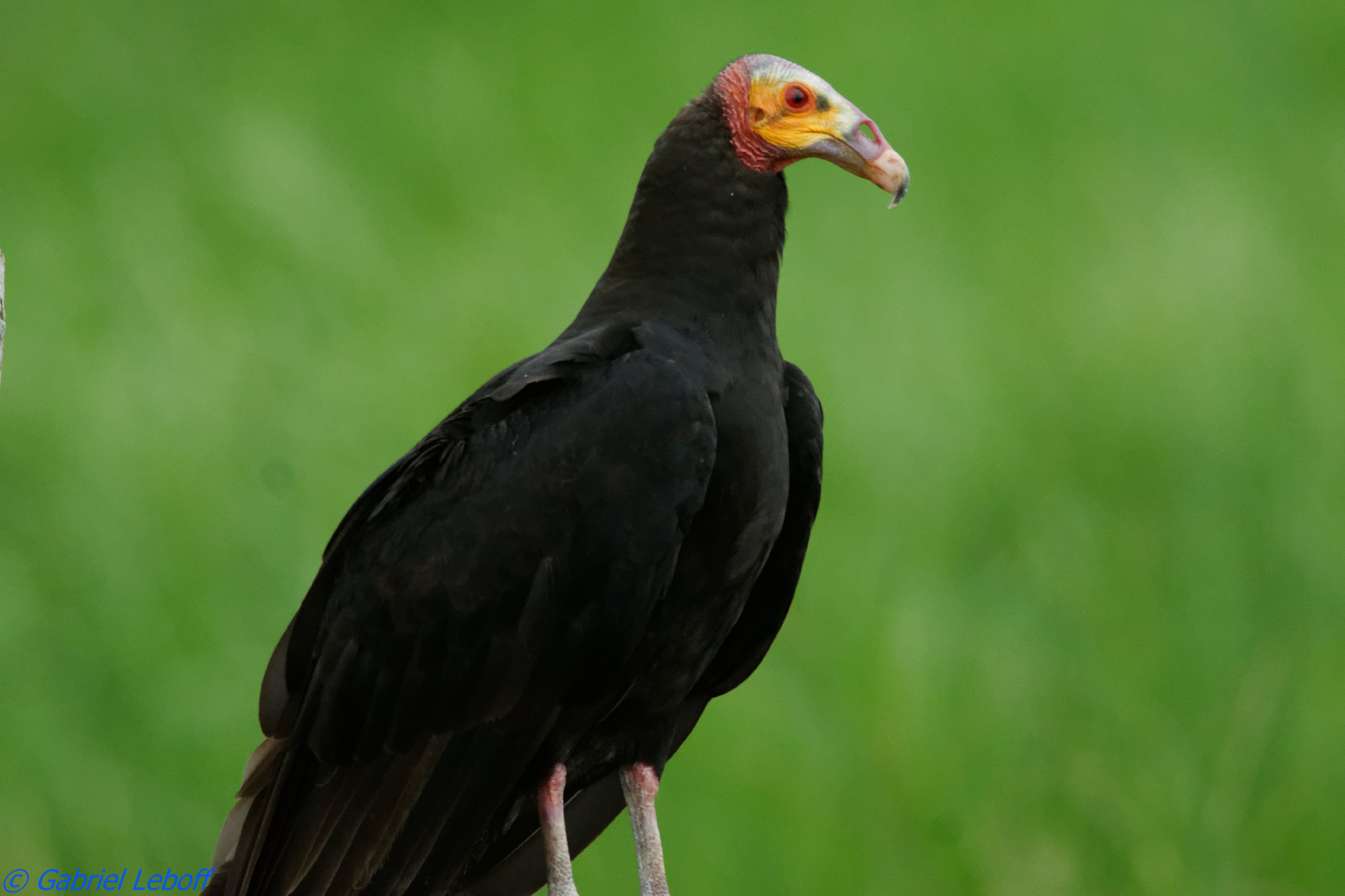
Cathartes burrovianus
SUBFAMILY
Catharnae
TAXONOMY
Cathartes burrovianus Cassin, 1845, near Veracruz City, Mexico.
Two subspecies sometimes recognized.
OTHER COMMON NAMES
English: Savanna vulture; French: Urubu а tкte jaune; German:
Kleiner Gelbkopfgeier; Spanish: Aura Sabanera.
PHYSICAL CHARACTERISTICS
Smallest of the Cathartes on average, 23–26 in (58–66 cm),
2.1–3.3 lb (0.94–1.5 kg); sexually monomorphic. Black
plumage; bare skin on head and neck varies from bright yellow
to orange and blue tones.
DISTRIBUTION
South Central America to Uruguay, east of the Andes Mountains.
HABITAT
Open savanna and water courses, open flat grasslands to the
edge of forest but generally not over forest.
BEHAVIOR
Uses olfaction as other members of its genus.
FEEDING ECOLOGY AND DIET
Will feed on dead animals of any size but specializes on
smaller carcasses found by relying on olfaction.
REPRODUCTIVE BIOLOGY
Very little known but that in general it is similar to C. aura.
CONSERVATION STATUS
Status and
DISTRIBUTION
poorly known but not threatened.
SIGNIFICANCE TO HUMANS
Never considered food. Like other small vultures generally tolerated
because of feeding habits that reduce the presence of
animal carcasses decreasing the likelihood of disease transmission
to humans.
Photo Gallery of - Lesser yellow-headed vulture




 Animalia Life
Animalia Life